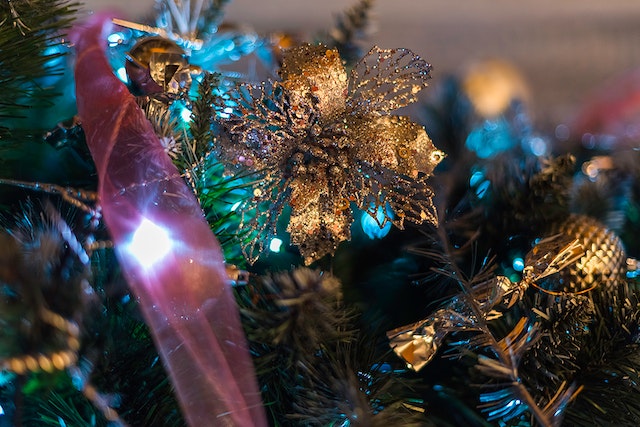The Origins of Pickling Gherkins for Christmas in Germany
As far as we can tell, the glass Christmas pickle ornament is a long-standing German custom. But when put to the test, can this “ancient German tradition” hold water?
From an ornament store comes this take on the “pickle legend:” German families have a longstanding custom of secretly placing a pickle ornament high in the fir tree on Christmas Eve. The pickle was the final ornament to go up on the tree, and the parents were the ones to do it. The children anticipated that St. Nicholas would leave an extra present for the child who had been the most attentive the following morning. According to legend, the first grownup to unearth the pickle will be blessed with good fortune for the entire year.
This tale of a Christmas pickle, with some small changes, can be found virtually anywhere these days, from websites to magazine articles to the backs of Christmas ornament boxes. It is said that Germans hide a glass pickle ornament somewhere on the Christmas tree. On Christmas morning, the first kid to uncover it will receive an extra prize or bonus gift.
The inaccuracies in this “tale” are immediately apparent to anyone who is familiar with German Christmas traditions. To begin, on December 24th, St. Nicholas does not visit Germany. On the evening of December 6th, he will come. Not even German kids get to unwrap their presents on Christmas morning. In Germany, this occurs on Christmas Eve, called Heiligabend. For more information on the holiday traditions celebrated in Germany, check out our German Christmas Guide.

The Health Benefits of Pickling Gherkins and Its Role in German Culture
The fact that no one in Germany seems to be familiar with the custom of eating German pickle (saure Gurke, Weihnachtsgurke) is, nevertheless, a major setback. This is a perennial topic of discussion on the AATG (American Association of German Teachers) forum. Teachers of German in the United States and Europe have never encountered a native German who has heard of the pickle legend, let alone observed this Christmas tradition. Perhaps someone in Germany or the United States came up with the idea to increase demand for Christmas glass decorations. Or perhaps the Weihnachtsgurke is just a little-known tradition in a remote part of the country.
Rita Mace Walston, formerly of About.com’s “Germany for Visitors” Guide, authored an article about the custom of using pickles as Christmas ornaments. She was of German descent but had also never heard of it. She elaborated, “I asked friends, acquaintances, and even a few Christmas market vendors if they were familiar with the habit. I talked to people from all around Germany, including my friends and family in Bavaria and Swabia. As far as I could tell, nobody understood what I was referring about. “I had a friend ask me if I was trying to con her out of money.
Then Rita received some news from a source claiming to have information that could help solve the mystery. John Lower (Hans Lauer perhaps?), born in Bavaria in 1842 and a descendant of a Union soldier who served in the American Civil War, wrote to share a tale of a Christmas dilemma that had befallen his ancestors. Tradition has it that “John Lower was arrested and transferred to Andersonville, Georgia prison.” He was weak and hungry, so he asked a guard for a single pickle to eat before he passed away.
The guard felt bad for John Lower and got him into a sticky situation. John, so the family myth goes, gained the spiritual and physical fortitude to carry on thanks to the pickle and the favor of God. When he was finally reunited with his family, he instituted a new holiday custom of placing a pickle somewhere in the tree. Whoever opened the pickle first on Christmas morning would have a prosperous new year.